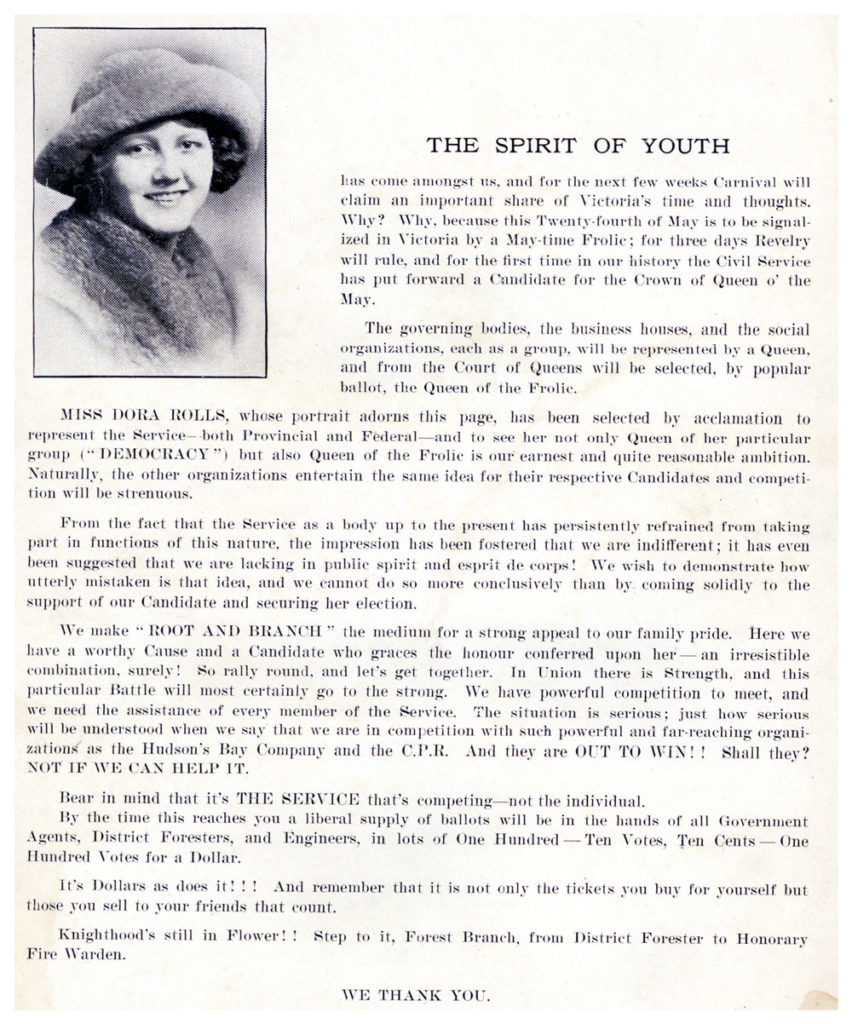

The May Carnival or May Day celebration is an English festivity signifying the transition from Spring to Summer. The holiday comes with its numerous traditions and folklore which are still celebrated and shared to this day. A May Queen is selected from a group of around thirteen girls. The winner returns the next year to crown the new May Queen and stays in the procession. The May Queen herself is the personification of the May Day holiday and the two seasons. The May Queen typically wears a white gown and tiara/ crown to symbolise purity. She is generally crowned by flowers and makes a speech before the dancing begins which often takes place around a Maypole: a tall decorated wooden pole.
The oldest unbroken May Queen tradition is in Hayfield, Derbyshire, and is based on a much older May Fair. The largest May Carnival event in this tradition is the Beltane Fire Festival in Edinburgh, Scotland. Locally, a May Day celebration is held annually, since 1870, in New Westminster, B.C., and has the distinction of being the longest running May Day celebration of its kind in the British Commonwealth.
Miss Dora Evelyn Emma Rolls (Gonnason) was the Civil Service’s (now BC Public Service) 1923 Provincial May Queen candidate. This was the first year that the association had taken part in the crowning of the May Queen and Queen of Frolic. As to why the Service had refrained from participation in previous years is not clear. Governing bodies, business houses, and social organizations elected one Queen to represent them in the Court of Queens. From the Court one Queen will be crowned federally as the Queen of Frolic.
After being crowned Victoria’s 1923 May Queen, Dora Evelyn Emma Rolls went on to marry Carl Seymour Gonnason joining the pioneer Victoria family who co-owned one of the first lumber mills in Victoria: Lemon-Gonnason Company Ltd later the Crowe-Gonnason Co. Ltd located in Rock Bay. The mill was started by Carl’s father and uncle and was operational from 1891 to 1958. The vacant buildings burned down in 1960.


